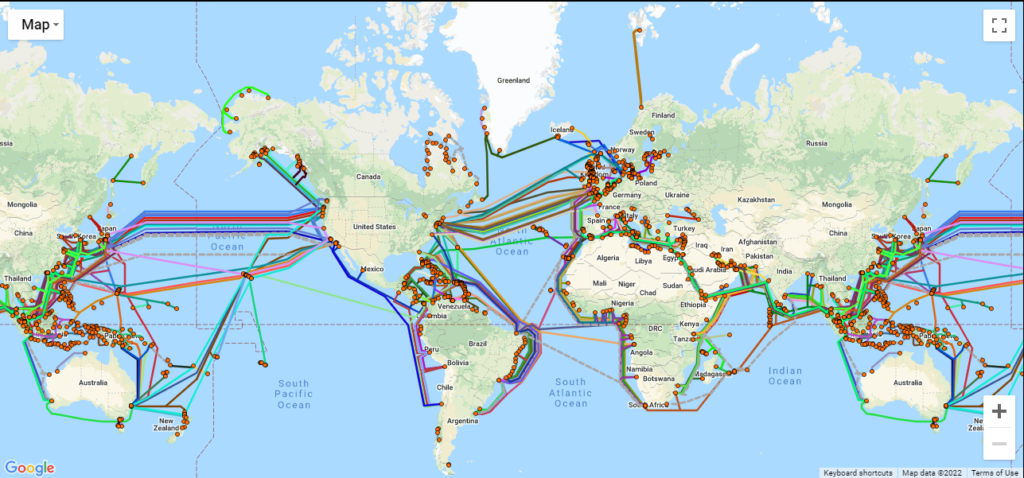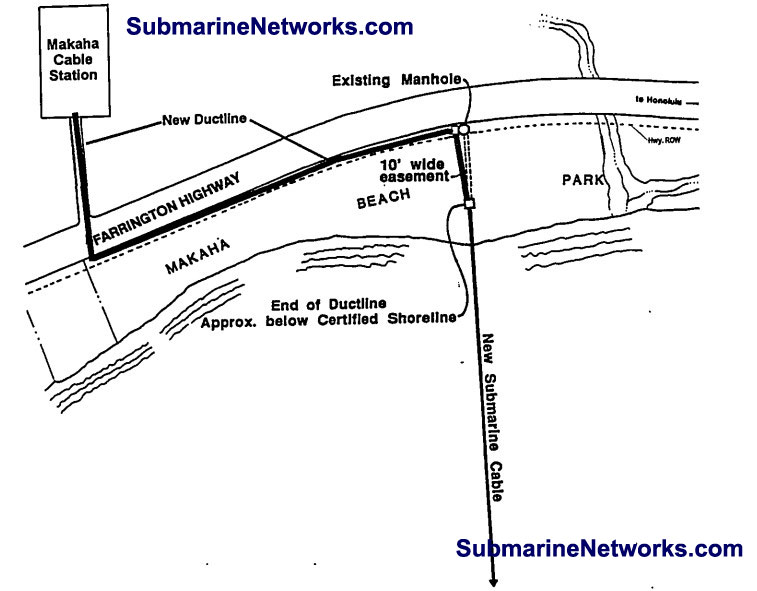
A Wired World. In The Undersea Network , Nicole Starosielski argues that we still operate in a material realm where geography, topology, and topography are intertwined within a system of communication technologies codifying worldviews. Material megastructures for digital flows permit localized institutional structures to act as global networks. Moreover, these communication ecologies tend to perform in the manner of Foucault as “other” spaces, as heterotopias that store and transmit microcosm of the world. I will briefly analyze Starosielki’s global infrastructure thesis with Benjamin Bratton’s concept of The Stack, an imminent planetary computational megastructure operating over the material world.
In the age of digital technology, we may believe that wireless and satellite communications are managing global information networks. However, since the 19th century, we have relied on cables across the ocean floor for secure and reliable communication transmission (Starosielski, 2015). The Undersea Network is an eye-opening account of how deep-ocean data/telecommunication cables transmit our present-day digital information. The book unearths crucial information network artifacts essential to capitalism and state security across the globe. Starosielski’s background in media studies brings a material view of the marine cable archeology deployed and connected to land base nodes across the world.

In the early stages of telegraph communication, the undersea system of cables was made from copper, while the conversion to coaxial cable occurred during the cold war period. Currently, fiber optic cable is the preferred option. According to Starosielski’ a signal from NY to London only takes eight of the time to reach its destination as it does by satellite (Starosielski, 2015).
The cables on the ocean floor are vulnerable to clipping by ships navigating or anchoring near them; therefore, they are covered with a layer of soil to avoid any possible disruption. As a fragile cable on the ground, the system is practically defenseless; however, what keeps it secure is that it is laid in some of the most inaccessible geographies to human beings. As the cables reach the surface, they connect to gateways stations designed as discrete buildings in rural areas. These compounds are built to relay data from the numerous network cables serving different nations. They can be categorized as heterotopias producing our world’s digital information twin. A heterotopia, in the manner of Anthony Vidler’s interpretation of the concept, as spaces that are obsoletely other (Vidler, 2014).

https://www.submarinenetworks.com/en/stations/north-america/usa-hawaii/makaha
The undersea cable system is not an allegory. It is a real object, as real as the geography of the oceans. What is running inside the data servers is a networked microcosm of our existence. Described as a “cable colony”, the station was a self-sufficient and insular space where companies reproduced a microcosm of empire” (Starosielski, 2015).
Stacks. In The Stack, digital theorist Benjamin Bratton states that our world is layered by soft and hardwired systems, Earth, Cloud, City, Address, Interface, User (Bratton, 2016). Interestingly, the layered components are a worldview of Earth and Cloud as a complex organization. Technology is a fundamental imperative to interact with the world in the layers after the earth. For Bratton, our political and economic systems work at a planetary scale made possible by digital technology and computing infrastructure that creates a series of non-geographical layers. The earth provides material and energy (resources and labor), while the Cloud is where virtual technologies operate ubiquitously across the globe

For Starosielski, technology is a form of layering building on its predecessor. The stack is a layer of continental, urban, and perceptual scales. In The Stack, the earth (as a layer) provides a datum and produces the resources needed to escape geographical domination by creating new computational megastructures. These planetary-scale computational layers are networks alluding to possible new world sovereignties that operate above the physical datum. As seen in The Undersea Network, the material world is still the structure from where the digital globe anchors itself. Yet, I think both the stack and the cable network are sedimentary structures.
In the end, everything needs to be plugged in somewhere.
Rene Peralta
Works Cited
Bratton, B. (2016). The Stack: On Software and Sovereignty. MIT Press.
Starosielski, N. (2015). The Undersea Network. Durham and London: Duke University Press.
Vidler, A. (2014). Heterotopias. AA Files, 18-22.
